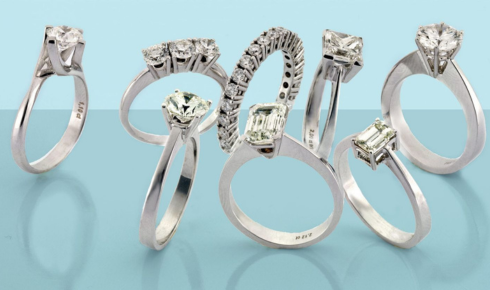Choosing the perfect engagement ring is a significant moment for many, especially when exploring options like vintage engagement rings. These rings often carry a timeless charm and unique craftsmanship that make them stand out. To fully appreciate the beauty and significance of any engagement ring, it is essential to understand the various settings and cuts available. These elements not only influence the ring’s appearance but also its durability, sparkle, and overall style.
Engagement ring settings refer to how the gemstone is held in place on the band. Different settings highlight the stone in unique ways and offer varying levels of protection and visibility. One of the most popular settings is the prong setting. It uses small metal claws to grip the gemstone, allowing maximum light to pass through, enhancing the stone’s brilliance. This classic setting is often favored for solitaire rings, especially those featuring round or princess-cut diamonds.
Another well-known style is the bezel setting, where a thin metal rim encircles the gemstone completely or partially. This setting provides excellent protection for the stone, making it ideal for those with active lifestyles or for softer gemstones. It also lends a sleek, modern look to the ring, contrasting with the intricate designs seen in vintage engagement rings.
The pavé setting incorporates numerous small diamonds set closely together along the band, creating a continuous sparkle effect. This setting enhances the ring’s glamour and adds visual interest without overpowering the central stone. Similarly, the channel setting holds small stones between two strips of metal, offering a secure and smooth finish, often used in eternity bands but sometimes incorporated into engagement rings for added elegance.
When it comes to cuts, the shape and facet arrangement of the gemstone greatly affect its light performance and style. The round brilliant cut remains the most popular due to its exceptional sparkle and versatility. It has 58 facets, designed to maximize light reflection and brilliance.
The princess cut, characterized by its square shape and sharp corners, is a modern favorite that combines elegance with a bold look. It is often set in prong settings to protect the delicate corners. Cushion cuts offer a softer, romantic feel with rounded edges and large facets that enhance brilliance, making them a popular choice for vintage-inspired rings.
Other distinctive cuts include the emerald cut, with its rectangular shape and step facets that produce a hall-of-mirrors effect, and the oval cut, which elongates the finger while maintaining excellent brilliance. Marquise and pear cuts are unique and eye-catching, offering different takes on the elongated gemstone shape. For more helpful blog posts like this one, visit the rest of our site, MyusaWire.
Choosing the right combination of setting and cut depends on personal style, lifestyle, and the desired look of the ring. Vintage engagement rings often feature intricate settings like filigree or milgrain detailing, enhancing their antique appeal. These designs can pair beautifully with cuts like cushion or old European cuts, which have a softer, less uniform facet arrangement compared to modern cuts.
In summary, understanding the different engagement ring settings and cuts is vital when selecting a ring that not only looks stunning but also suits the wearer’s personality and needs. Whether drawn to the classic sparkle of a round brilliant in a prong setting or the timeless elegance of a cushion cut in a detailed vintage setting, the choices available allow for endless customization. This ensures that each engagement ring can truly reflect the unique love story it represents.

